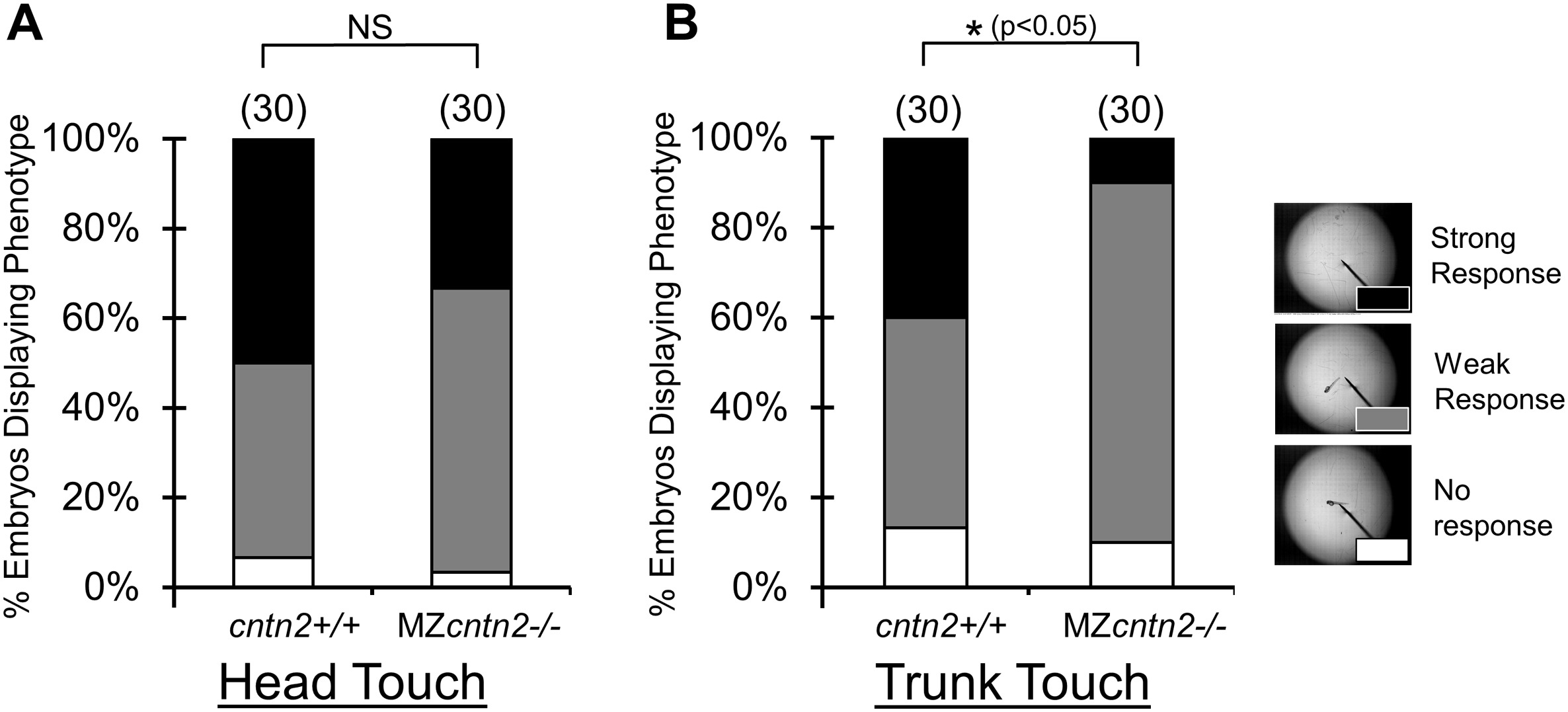Fig. 6
cntn2 mutants exhibit defective touch responses.
(A, B) Distribution of touch-evoked escape responses of 2 dpf cntn2+/+ and MZcntn2−/− embryos following a head touch (A) or a trunk touch (B). The larval responses were binned into three categories: No response (no movement after touch), Weak Response (muted movement with larva remaining in the field of view), and Strong Response (rapid and vigorous movement with larva swimming out of the field of view). MZcntn2−/− mutants responded similarly to control cntn2+/+ larvae when touched on the head. However, they exhibited much weaker escape responses compared to cntn2+/+ larvae when touched in the trunk. Data pooled from 2 experiments (number of embryos in parenthesis). *Chi-square test at p < 0.05; NS: not significant.
Reprinted from Mechanisms of Development, 152, Gurung, S., Asante, E., Hummel, D., Williams, A., Feldman-Schultz, O., Halloran, M.C., Sittaramane, V., Chandrasekhar, A., Distinct roles for the cell adhesion molecule Contactin2 in the development and function of neural circuits in zebrafish, 1-12, Copyright (2018) with permission from Elsevier. Full text @ Mech. Dev.

